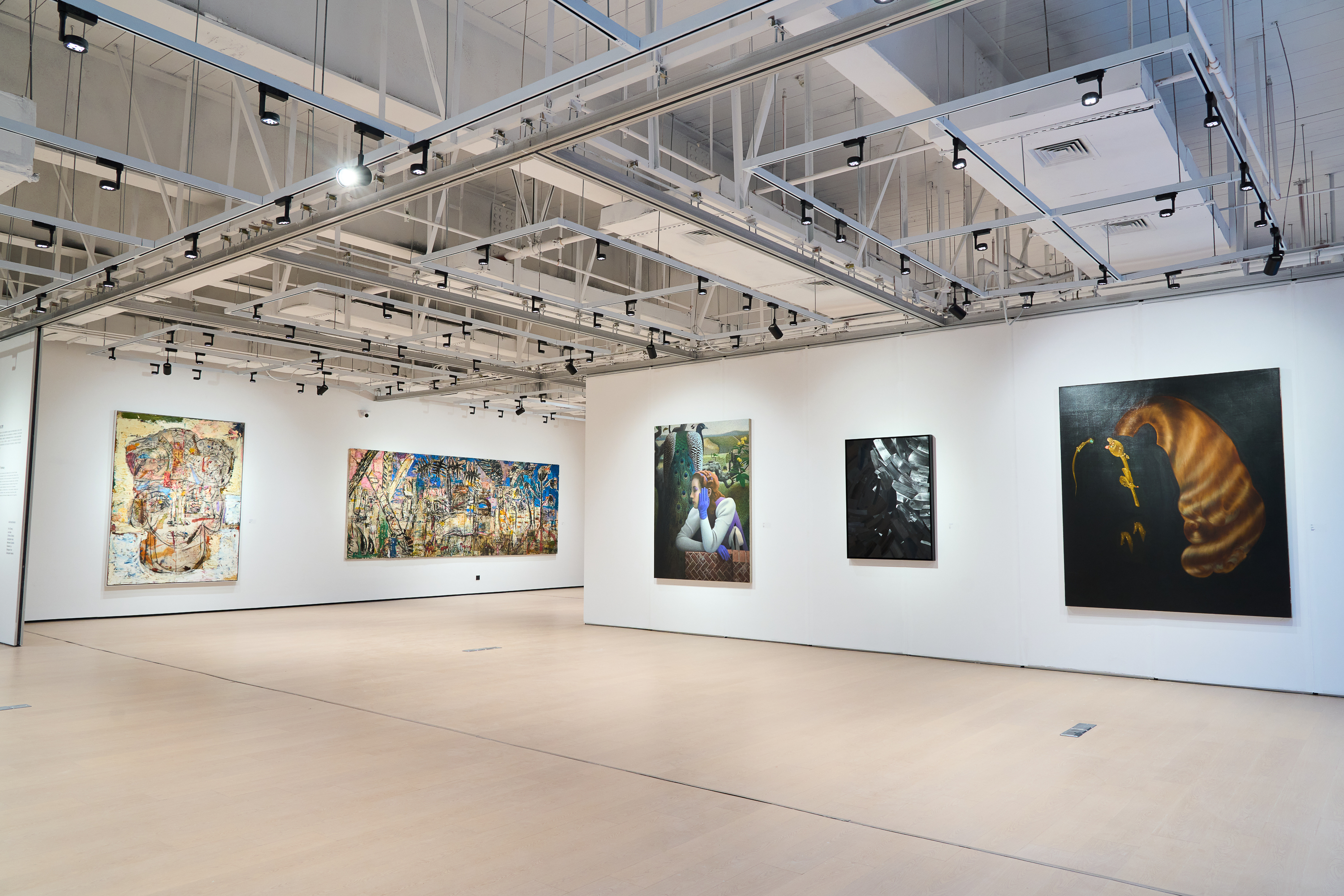The Sphere of Reality and Fantasy–Inheritance and Exploration of the Tangible and the Imagined exhibition opening
Inheritance and Exploration
Modernism emerged in the late 19th century, prioritizing innovation, originality, and pure form, emphasizing artistic self-discipline and depth. While postmodernism in the 1960s deconstructed prior concepts, advocated diversity and interdisciplinary approaches, and questioned Nobility and Truth. These two periods were peaks of ideological and artistic exploration, influencing contemporary art profoundly. Postmodernism has evolved to a stage with diverse cultural contexts, conceptual frameworks, and formal expressions; meanwhile, definitions of artistic movements and styles have become ambiguous. We think that focusing on the inheritance and exploration between contemporary artists and the ones they prefer is a meaningful research direction–especially with no new systematic artistic philosophy or visual paradigm (philosophical thought and visual paradigm). Analyzing contemporary artists' thoughts and expressions historically enhances our understanding of the artistic value. We believe continuous exploration in this direction will uncover significant and influential artists and groups of new art historical significance and wide influence.
Reality and Fantasy
Throughout the history of art, the demarcation between reality and fantasy has been constantly challenged and reshaped by artists. From the figurative style of Realism to the symbolic exploration of Abstractionism, from the inner expressions of Expressionism to the dreamy depictions of Surrealism, artists have continuously interpreted reality, constructed fantasies, expressed emotions, and questioned the essence of existence through various styles. For this exhibition, we picked contemporary artists from four art movements–Expressionism, Surrealism, Realism, and Abstractionism–in the foundation's collection and invited audiences to explore and reflect on their current status and significance, while showing the artistic journey of exploring the interaction between reality and imagination.
Expressionism focuses on the inner world, rejects precise depictions of the external material world. It conveys emotions and feelings through vibrant colors, distorted lines, and exaggerated representation. It reveals struggles in the psyche, prioritizing emotions, and shows responses to reality.
Surrealism merges reality and dreams, investigates the subconscious via non-rational visual language. Surrealist works take viewers to a fantastical realm, break the logic of time and space, and reveal the mystery and absurdity beneath daily life.
Realism is anchored in objective-world depiction, articulating human society and nature's essence via precise visual language for viewers. It encapsulates the artist's social-reality observation, rooted in the observable environment, and employs techniques and detailed portrayals to engage viewers with reality more closely.
Abstractionism discards the imitation of the material world, concentrating on the intrinsic relationships among colors, lines, and shapes while pursuing artistic purity and autonomy. It embodies reality's simplification and abstraction, elevating visual symbols to the forefront of expression and transcending representational art to investigate spiritual and conceptual dimensions.

